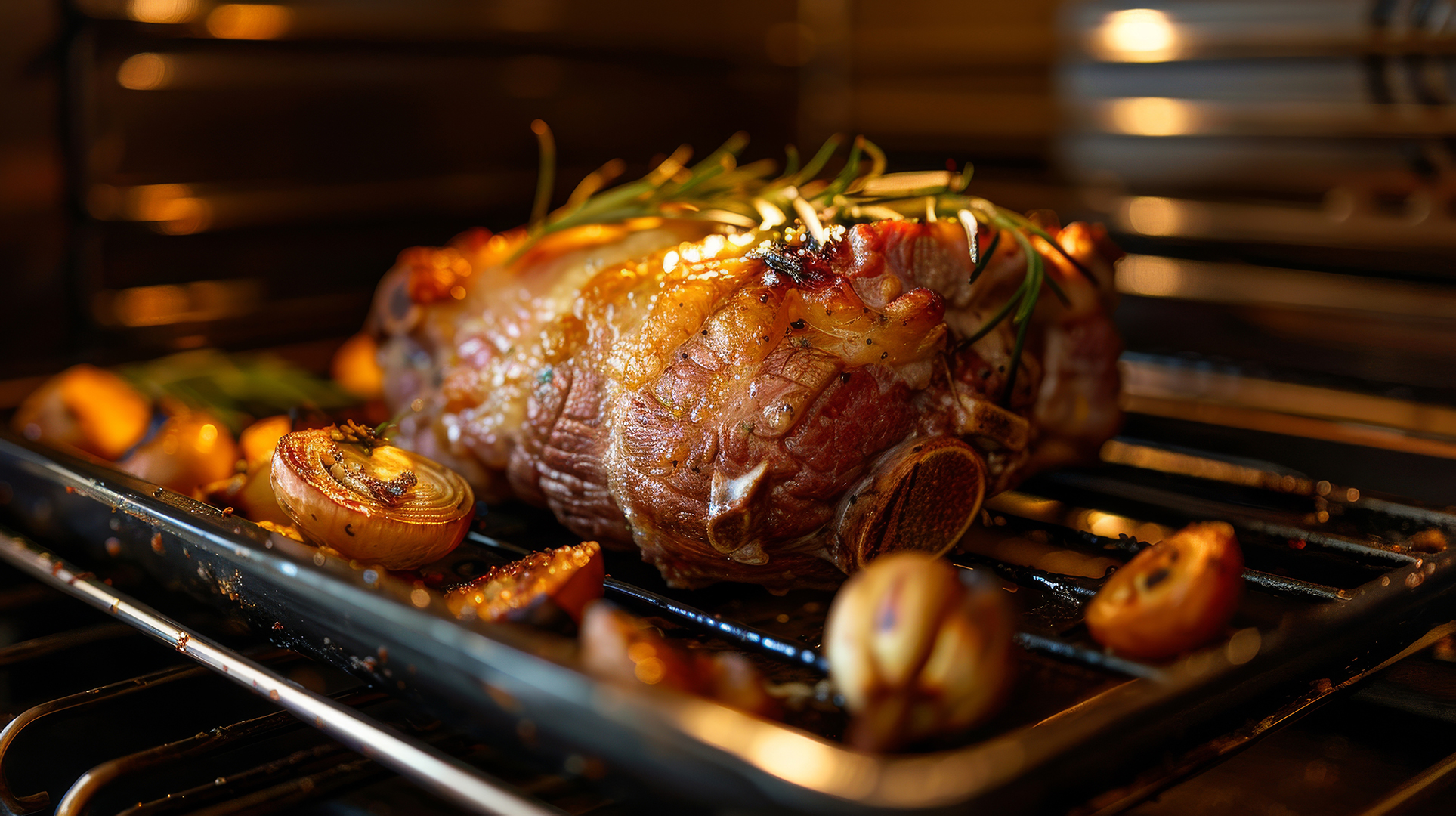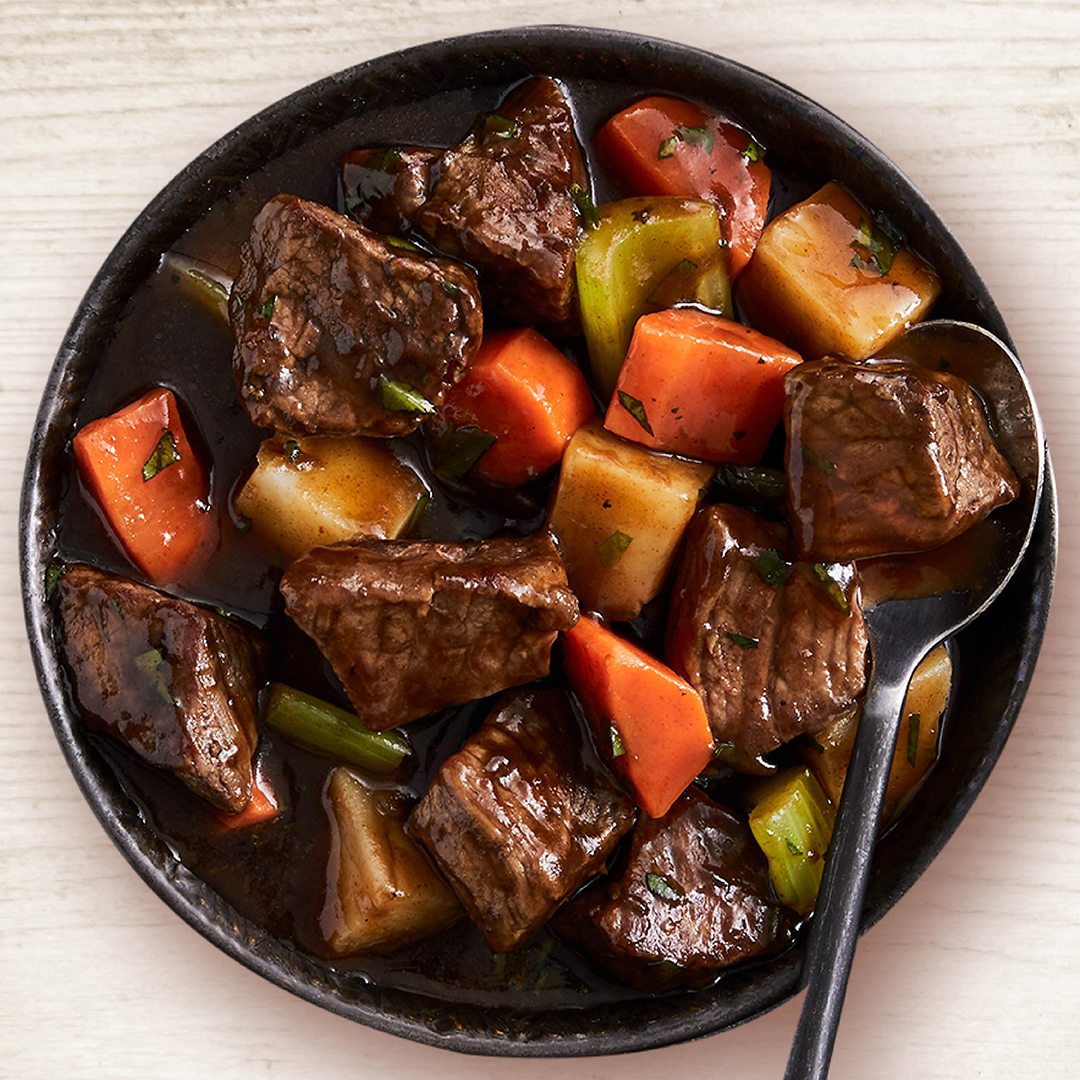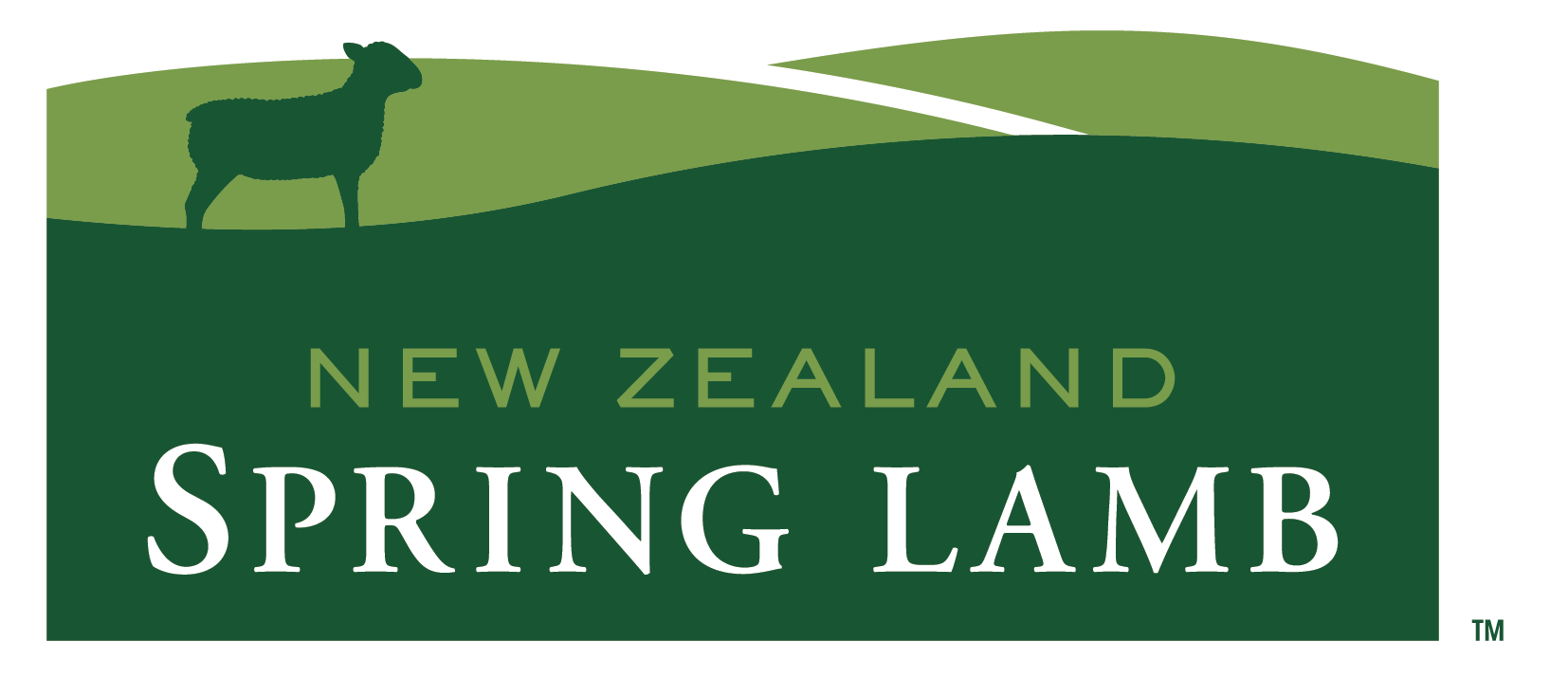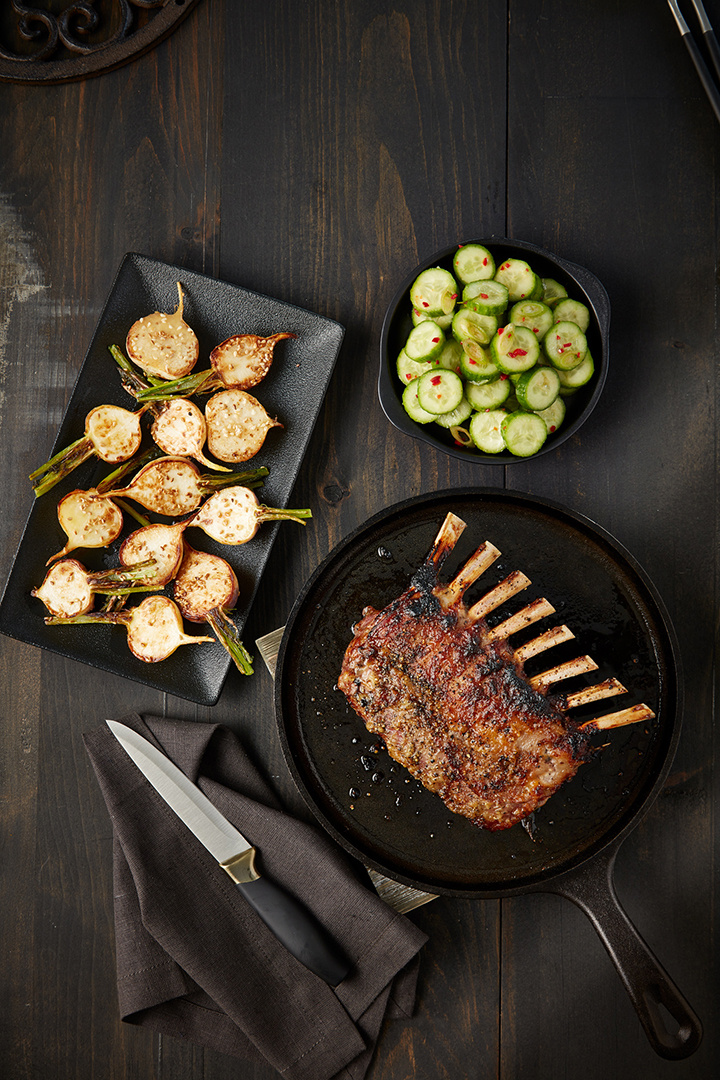HOW TO PREPARE LAMB THE HEALTHIER WAY

Lamb is a staple in many cuisines worldwide, and it offers a rich source of high-quality protein, essential vitamins, and minerals such as iron and zinc. The way you prepare your lamb dish can influence the retention of these nutrients. Enjoy all the flavor while considering healthier ways to prepare your lamb dishes.
LEANER CUTS OF LAMB
The nutritional value of lamb is heavily influenced by the cut as well. As a rule of thumb, the leaner the better! New Zealand Spring Lamb tends to have less marbling than other red meats, so it becomes leaner after cooking when you trim the fat around the edges.
The leanest cut choices include lamb loin, lamb shank, and leg of lamb. All of these have about 150 to 170 calories per 3-ounce serving and 2 to 3 grams of saturated fat. It’s small changes like this that contribute to a healthier lamb dinner. With each cut, there are new recipes for you to explore. Get inspired when you check out our New Zealand Spring Lamb recipes!
HEALTHY COOKING METHODS
There are multiple ways to cook lamb, and some ways are healthier than others! Using grilling, broiling, or roasting cooking methods, you can reduce the fat content in the lamb. While lamb is a good source of protein and various nutrients like iron and zinc, excessive fat intake can overshadow these benefits. By reducing fat content, you can better balance your nutrient intake and ensure that you’re deriving the most nutritional value from your meals.
Choosing cooking methods like roasting, grilling, stewing, and slow cooking will minimize nutrient loss and will certainly maximize the health benefits of consuming lamb. Let’s take a closer look at the different methods:
Roasting for Moisture Retention
Roast lamb is a form of cooking that uses dry heat. Dry heat cooking differs from moist heat methods, where the meat is cooked in water or another liquid. A roasting pan often includes a rack to keep the lamb above the juices that drip down as it cooks (au jus). Gain these nutrients back by gathering and serving the au jus as an accompaniment to your dish.
Grilling
Grilling is a fantastic option for cooking lamb while reducing fat content. By grilling lamb at high temperatures, excess fat melts away, resulting in a leaner end product. Turn up the grill and get ready for lamb meat to be your new favorite barbecue go-to! Grilling temperatures usually range from 375–450°F (190–232°C) and so at those temperatures, the fat melts down and drips onto the grill or cooking surface. As an extra precaution, safely wipe and remove the access fat as soon as possible. Keeping cooking times short and removing meat from high heat before it becomes charred is suggested for best results. Enjoy the juice goodness of your grilled lamb with
Roasting
A lovely lamb roast is the best option for flavor and moisture retention! First things first, utilize a rack. Roasting racks keep lamb elevated above drippings, allowing air to circulate evenly for moist, tender lamb meat. Conserve and serve the juices that drip from the lamb during roasting to regain lost nutrients and enhance flavor. After slicing the lamb roast, don’t discard the delicious juices left in the bottom of the pan. These juices are packed with flavor and can be used to make a savory gravy or sauce. Simply strain the juices to remove any debris, then simmer them in a saucepan with a splash of broth, wine, or herbs for added depth of flavor. Drizzle this luscious sauce over the sliced lamb for an extra burst of taste and moisture. This same tip can be applied when heating leftover lamb roast.

Stewing
When it comes to stews, low and slow is the way to go! Stewing and simmering are similar moist heat methods of cooking that you can try. Cooking with moist heat at low temperatures can minimize the formation of harmful compounds. To avoid this loss of nutrients, choose a recipe with complementary ingredients that offer added health benefits of their own. A hearty lamb stew brimming with vibrant vegetables like kale, carrots, and sweet potatoes not only provides a comforting meal but also offers a wealth of nutritional value. Infused with aromatic herbs like rosemary and thyme, this stew boasts antioxidants and anti-inflammatory properties, making it a nourishing choice for both body and soul.
Panfrying
Choose between a skillet, wok, or pot, over high heat for a panfrying option. These cooking times are generally very short, yet they still capture tender meat with good flavor. Panfrying lamb can be considered a healthier option compared to other cooking methods like deep frying because it typically requires less added fat. By using minimal oil and cooking the lamb over moderate heat, you can retain more of its natural flavors and nutrients while achieving a delicious, caramelized exterior. This cooking method allows you to control the cooking process more effectively, preventing the lamb from becoming overly greasy and preserving its inherent tenderness. Opt to use a healthier fat source, such as olive oil or coconut oil, to aid in the health benefits.
Slow Cooking
For a tender pull-apart cooked lamb, try slow cooking. This is a process that will take several hours but will be worth the wait. Cooking temperature settings on a slow cooker generally range from 190°F (88°C) for the low setting to 250°F (121°C) for the high setting. Slow cooking is similar to simmering and stewing meat, where the goal is to keep all of the nutrients by choosing recipes where you can consume the cooking liquid as well.
By incorporating these healthier cooking methods into your lamb preparations, you can enjoy the rich flavor and tender texture of your lamb chop, or cut of choice, while maintaining its nutritional integrity. Whether you prefer grilling, roasting, stewing, panfrying, or slow cooking, each technique offers unique benefits for maximizing flavor and moisture retention. Looking for recipe inspiration? New Zealand Spring Lamb has a lot of options for you to choose from on our website and social media pages!


